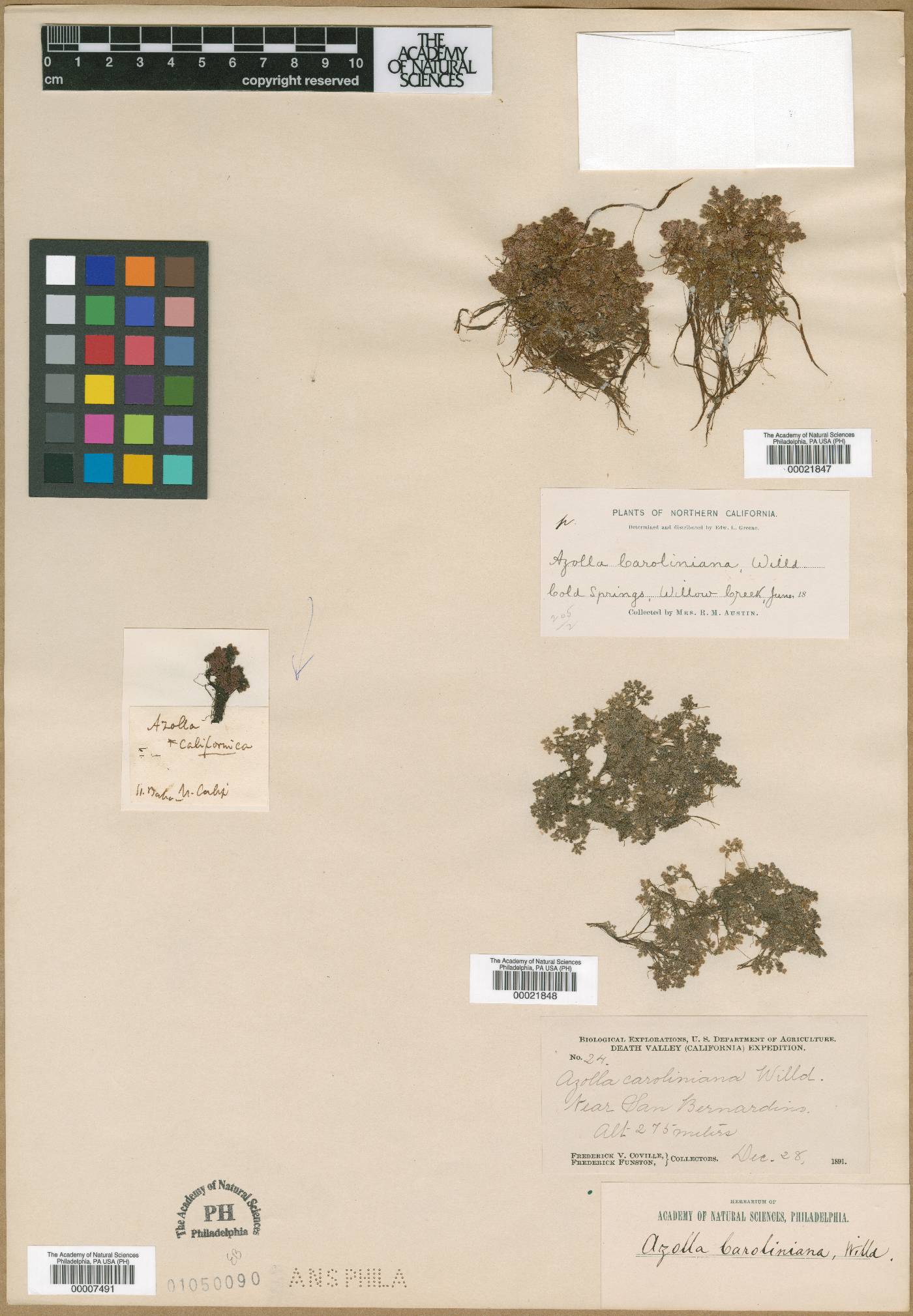Azollaceae
|
Azollaceae |
|
|
Plants aquatic, floating on placid water, occasionally stranded, subsisting on mud; plants heterosporous (producing 2 kinds of spores), leptosporangiate, proliferous by axillary fragmentation. Roots translucent to brown, lax, singular [in bundles] without branches, emerging at stem branch points; root hairs to 1 cm, emerging from root cap. Stems usually not green, with extensive subdichotomous branching, prostrate and reniform or polyreniform, or nearly erect. Leaves sessile, alternate, often imbricate, in 2 ranks along upper side of stem, 0.6--2 mm wide; each leaf with 2 lobes; upper (emersed) lobe greenish or reddish and photosynthetic, with narrow colorless margin, several cells thick, bearing colony of blue-green algae ( Anabaena ) in ovoid cavity at base of lower side; lower lobe often floating or immersed, slightly larger than upper lobe, mostly not green (often colorless and translucent), 1 cell thick except at base, ± cup-shaped. Sporocarps in pairs [tetrads] at base of lateral branches, members of pair of same sex or of different sexes. Megasporocarps containing 1 megasporangium that produces 1 functional megaspore. Megaspore spheric, 0.2--0.6 mm, topped with dark, conic, slightly narrower structure (indusium) covering 3 [9] floats and a blue-green algal colony. Microsporocarps globose, apically umbonate, 10--27µm diam., containing to 130 microsporangia; microsporangia containing 32 or 64 microspores 3 µm diam., aggregated into 3--10 masses covered with arrowlike barbs [glabrous or with needlelike hairs on 1 side]. Azollaceae has been included in Salviniaceae, but the relationship is not close. PLANT: Annual or perennial floating aquatic herbs, sometimes stranded on mud, heterosporous. ROOTS: adventitious, appearing fascicled from the stem nodes, unbranched. STEMS more or less dichotomously branched, sometimes breaking apart with age. LEAVES: alternate, 2-ranked, slightly overlapping, sessile, deeply 2- lobed, the lobes lacking apparent venation, one lobe floating and green, the other submerged, translucent, and nonphotosynthetic. FLOATING LEAF LOBES: oblong-ovate to obovate, the adaxial (emergent) surface with moderate to dense, minute, papilla-like hairs, with narrow thin entire margins. SUBMERSED LEAF LOBES: slightly larger than the floating lobes, oblong-ovate to obovate, thin, membranous. SORI: borne in sporocarps. SPOROCARPS: of 2 types, usually on the same plant, globose or nearly so, each containing 1 sorus, some with 1 megasporangium containing 1 megaspore, others with numerous microsporangia, each containing 32 or 64 microspores, produced infrequently, in pairs on short submerged stem branches (Fig. 2). SPORANGIA: thin-walled, lacking an annulus, breaking open irregularly through decay. MEGASPORES: large (0.2-0.6 mm), more or less ovoid, differentiated into a basal hemispheric portion, a medial ring-like collar, and 3 apical sac-like floats, these covered by a more or less conical, cap (the remains of an indusium). MICROSPORES: dust-like (10-27 μm), trilete, globose, imbedded in 3 or 4 amorphous translucent masses of cells (massulae), these with the outer surface usually bearing apically barbed trichomes. GAMETOPHYTES: reduced, developing inside the spores, the archegonia and antheridia protruding from the spore wall. X = 22. NOTES: 1 genus, ca. 7 spp., nearly worldwide. REFERENCES: Yatskievych, G. and M.D. Windham. 2008. Vascular Plants of Arizona: Azollaceae. CANOTIA 4 (2): 31-34, 2008. |
|
